Haiti - Facts
The situation in Haiti is unstable, with gang violence paralysing the country. Supplies of fuel, food and water are very limited and cholera is rife. Cruising there should not be attempted at this time. The information below refers to times when cruising to Haiti was possible.
- Haiti, which makes up the western third of the island of Hispaniola, is a passage through the “old Caribbean”. Its innocence is still present, but – like Cuba – is losing some of this old charm as it catches up to the modern world.
- Haiti became the world’s first black-led republic in 1804, after Gen Toussaint Louverture led enslaved people in an uprising. This incensed its colonial master France, which derived a large chunk of its income from Haiti’s plantations, and it responded by forcing Haiti to pay inflated reparations to enslavers over 122 years. The US occupied Haiti from 1915 to 1934, sending in marines and military administrators. Further US military interventions occurred in 1994 and 2004, to “defend democracy” and restore order.
- Poverty exists in Haiti. Frequent earthquakes have exacerbated it, the most recent being on August 14, 2021 in the SW of Haiti (Les Cayes near Ile a Vache being the worst affected) . In the larger cities, there are still areas of slums similar to the favelas in Rio de Janeiro. This country has the lowest per capita income in the Western Hemisphere: $400 in the cities, $100 in the rural areas.
- Haiti has a UNESCO World Heritage site near Cap Haitian. The Citadelle Laferriere and the surrounding historical area is a highlight of the Caribbean.
- Haiti now has two SSCA hosts, one on Ile a Vache and one on Ile a Gonave, an island about 30 miles west of Port-au-Prince.
- Haiti offers easy entry into the Caribbean for North American sailors through the Windward Passage and parts of Haiti are very accessible. Clearance procedures are usually fast and feel informal compared to elsewhere.
- Those that use the Windward Passage can safely stop at Cap Mole St. Nicolas on the west side of the north peninsula or Bombardopolis on the southwest corner of the north peninsula.
- Going south through the Windward Passage at the west end of the south peninsula is Anse d’Hainault and then just around the corner Ile a Vache.
- Self-sufficiency is the key to visiting Haiti as there are no marinas or repair centres. It is good to have the ability to make drinking water as the potable water in Haiti is hard to come by and of poor quality.
- The language of Haiti is Kreyol, however many speak French and some even speak English.
- The capital, Port-au-Prince lies on the inside of the bay and is a bit of a long passage to reach it. Visit by land, not by sea: the primary wharf for the city is surrounded by one of the most densely populated slums in the West (Cite Soleil). However, just 35 miles to the west of the capital is the Bay of Bandareres, which is beautiful and not a dangerous area. See the Security section, however, for the latest situation.
- The Island of Ile-a-Vache is safe and charming. They are well acquainted with cruising boats and it is as good a cruising destination as any in the Caribbean.
- Cruising is best done from east to west as particularly during winter the strong trade winds make eastbound passages difficult. If going eastbound, cruisers normally do this along with the south coast as the north coast has more persistent swell from the Atlantic.
- If visiting Haiti from Colombia, it is recommended to clear first at Jamaica at Port Antonio before proceeding east to Haiti.
A map of recommended anchorages in Haiti (yellow spot) by Frank Virgintino, author of the free Haiti Cruising Guide.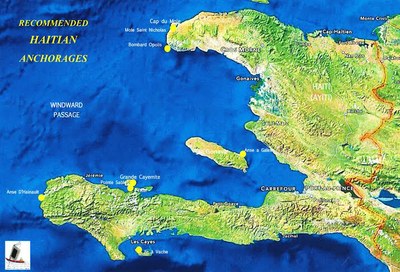

Read and Post Related Comments
If you have information for this section, or feedback on businesses used, please let us know at editor@noonsite.com. We also welcome new information about businesses you have used (see Related Businesses).
Next Section: Profile: Security
Related to following destinations: Haiti
Country Navigation
Courtesy Flag Discounts
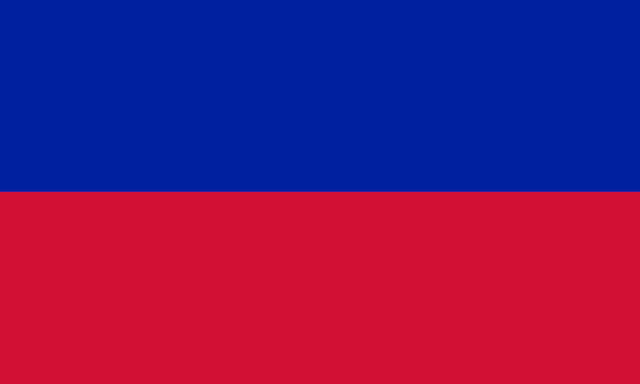

YachtFlags.com provides high quality courtesy flags that are manufactured in durable Knitted Polyester fabric. Knitted so that the fabric itself does not deteriorate in the constant movement that marine flags are usually exposed to, and polyester so that the flag does not weaken in the strong UV-light usually found in the main sailing areas of the world.
YachtFlags.com offers a discount to Noonsite members.
Use the coupon code NOONSITE-5A2B when checking out to get 10% off today.
Buy Now On YachtFlags.comMain Ports - Haiti
Courtesy Flag Discounts



YachtFlags.com provides high quality courtesy flags that are manufactured in durable Knitted Polyester fabric. Knitted so that the fabric itself does not deteriorate in the constant movement that marine flags are usually exposed to, and polyester so that the flag does not weaken in the strong UV-light usually found in the main sailing areas of the world.
YachtFlags.com offers a discount to Noonsite members.
Use the coupon code NOONSITE-5A2B when checking out to get 10% off today.
Buy Now On YachtFlags.comFormalities
Courtesy Flag Discounts



YachtFlags.com provides high quality courtesy flags that are manufactured in durable Knitted Polyester fabric. Knitted so that the fabric itself does not deteriorate in the constant movement that marine flags are usually exposed to, and polyester so that the flag does not weaken in the strong UV-light usually found in the main sailing areas of the world.
YachtFlags.com offers a discount to Noonsite members.
Use the coupon code NOONSITE-5A2B when checking out to get 10% off today.
Buy Now On YachtFlags.com

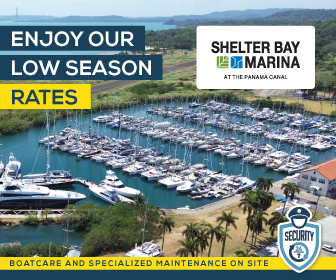
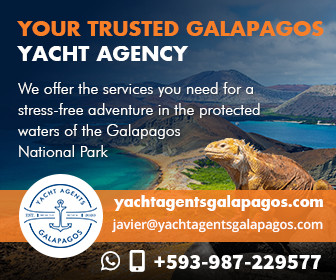

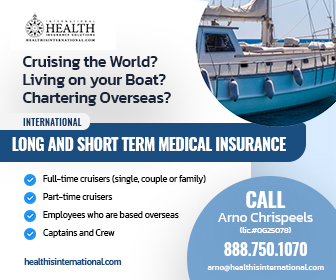

While Haiti is not a spot for cruising right now with the entire country in crisis and no public services, International Rescue Group (IRG) and their 97ft sailboat “Zeepaard” has an ambitious plan to bring donated supplies to Ile a Vache. The boat carries much-needed medical supplies, used sails, a full marine mechanic workshop of tools, a genset with welding features, food, clothes, fishing items and much more. Details at http://www.internationalrescuegroup.org. Other sail-aid organisations assisting Haiti include Hopefleet and Kingsfleet who have provided a ton of rice, thousands of dollars in specially approved seeds for gardens and 200 Cholera kits.
Ile a Vache: St Firmin boat service
Since 2013 I have been connected to Ile a Vache, on the southwest coast of Haiti. At first sight, I fell in love with the people and the place and I have stayed connected ever since.
It is one of the only safe places in Haiti for cruisers since a part of the population depends on them, so the inhabitants will protect the cruisers to promote their bay as a safe destination.
We are now able to announce a new service for cruisers, that will help you to make your stay in Ile a Vache even more comfortable: the St Firmin-family boat service.
To make your preparations easier you can contact them by email or Whatsapp, to ask everything you want to know in advance, and help you during your stay with everything you might need.
Edisson St Firmin speaks and writes fluently English and French. He helps you to good quality veggies and fruits for reasonable prices, delivers diesel on demand, can provide you with a Digicell sim card and change money and he can do all cleaning and polishing jobs on your boat. He or his brother can guide you to the weekly market and to the city of Les Cayes on the mainland. Their mother and sisters are ready to serve you a traditional Haitian dinner.
The St Firmin family house is on the beach in Kay-Kok directly next to the old (ruined) church. They offer a guarded dinghy dock on the beach for only US$ 1,– per day. Edisson and his family are waiting to welcome you and to make your stay at Ile a Vache an unforgettable experience. You only need to send a message to
Edisson St Firmin,
By telephone + 509 48226358 (Whatsapp)
or send him an email stfirmin_e@yahoo.com
He can send you pictures of the location of the boat service on request
Visit Haiti, January 2018.
We visited Cap Haitian at the beginning of January.
On arrival, the agent took care of Immigration. No customs are necessary. US$100 for everything.
When you arrive at the city of Cap Haitian, go to the cargo dock opposite the coastguard and ask for Thomas, also known as “Ketchup”.
He speaks good English and is working at the dock. The dock is very secure and when going to town, ask Thomas to go with you. He can arrange trips to the castle.
Thomas has a friend called Rodney. He was our watchman, sitting on the boat and keeping it safe. Thomas is very good at showing people around the market and the town. He knows what is safe and not.
Rodney got about 40 USD for 20 hours of “watch” and Thomas got 80 USD plus a big bag of rice for helping us for a whole week.
About 3nm west of Cap Haitian there is a bay called Labadie. First when you enter you will pass a big cruise dock and island only made for cruise ship tourists. At the bottom of the bay is a little village which is very beautiful. Anchor in 6m in good mud.
Water is not drinkable and watermakers are no use in Cap Haitian. There is too much garbage in the water. Have plenty of water and food on board. We bought a lot of food on the market, but carefully washed everything.
Every person on Haiti has been extremely friendly and open. It’s a beautiful country with beautiful people. It is really worth a visit!
How you can Help Haiti in the wake of Hurricane Matthew
Sam Altema is the SSCA representative on the island of Ile a Vache which was hit very hard during Hurricane Matthew to the point of sheer devastation. Food is actively being distributed according to reports from “Friends of Ile a Vache”, both by plane and barge, but the majority of homes have been destroyed with many having lost their belongings and personal property. Hard currency is needed to rebuild shelter and lives. If you wish to donate, Sam is working to distribute funds fairly and where they are needed the most.
Altema Jean Samuel – E-mail: altema1986@gmail.com>
Send funds via WESTERN UNION with Sam’s name. Donors will receive a ‘control’ number which must be emailed to Sam.
Michael Samuel on the island of La Gonave, Haiti, is the POC for AAE (www.aaehaiti.org) and is also receiving donations via Western Union.
Michel Samuel – E-mail: maitresam2001@yahoo.fr
Posted on behalf of Frank VIrgintino from Marina Zarpar, DR:
13 February 2015
We have received a few boats, the most recent today, Canadian flagged, that sailed directly from Cartagena to Ile a Vache Haiti. I have never heard of boats being boarded by the authorities in Haiti, but in this case, the Haitian Coast Guard assisted by what appears to be United Nations military or police boarded the boat and retained the owner and crew a number of days while the boat endured extensive checking.
I would recommend that boats coming from Colombia to Haiti, clear first at Jamaica at Port Antonio before proceeding east to Haiti.
For Frank’s contact details, see Haiti Cruising Guide (free) under Publications – http://www.noonsite.com/Countries/Haiti?rc=GeneralInfo#Publications
We recently visited Haiti on our journey through the windward passage. We are thankful for the guidance that Frank V. gave us on where to stop. If you happen to be travelling the same route, you should stop at the small fishing village just under the northern peninsula. It breaks up the long sail and is a good place to rest.
The people in the village are extremely nice and very helpful. Nobody asked us for money or bothered us in any way. There was a gentlemen name College who spoke pretty good English. He asked me to convey the real needs of the village where supplies. Especially things like paint (for the school), pens, pencils, and paper (for the kids), used or old sails for the fishermen, etc. After our initial anchoring, we were greeted by the fishermen, and taken ashore by College and his brother.
We were given a tour of the village, and then played limbo, and jump rope with the children. It was an awesome visit. The anchorage is good for any easterlies, but it can be a bit rolly. Email Frank for the coordinates.
Roark&Sheri
s/v Island Pearl